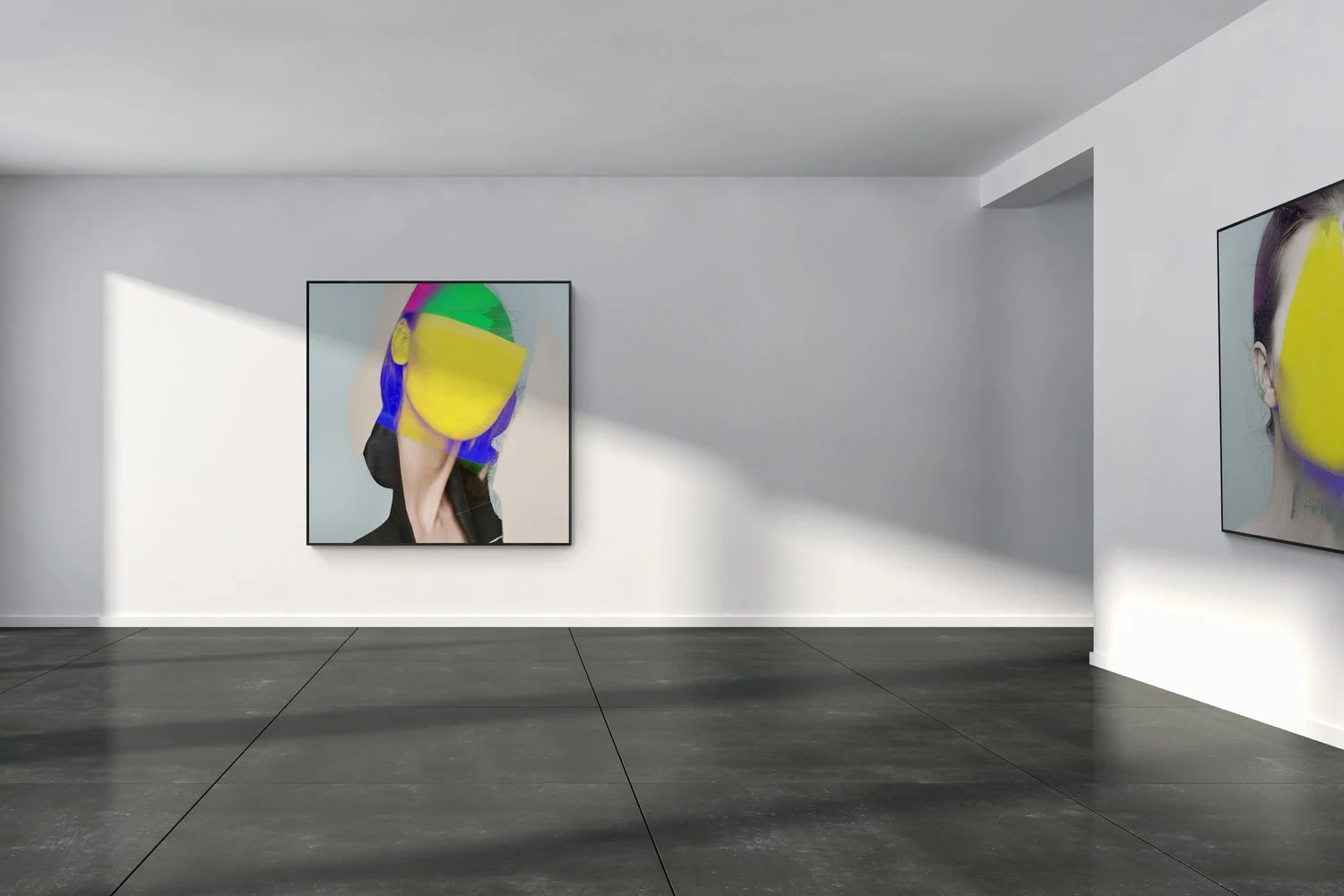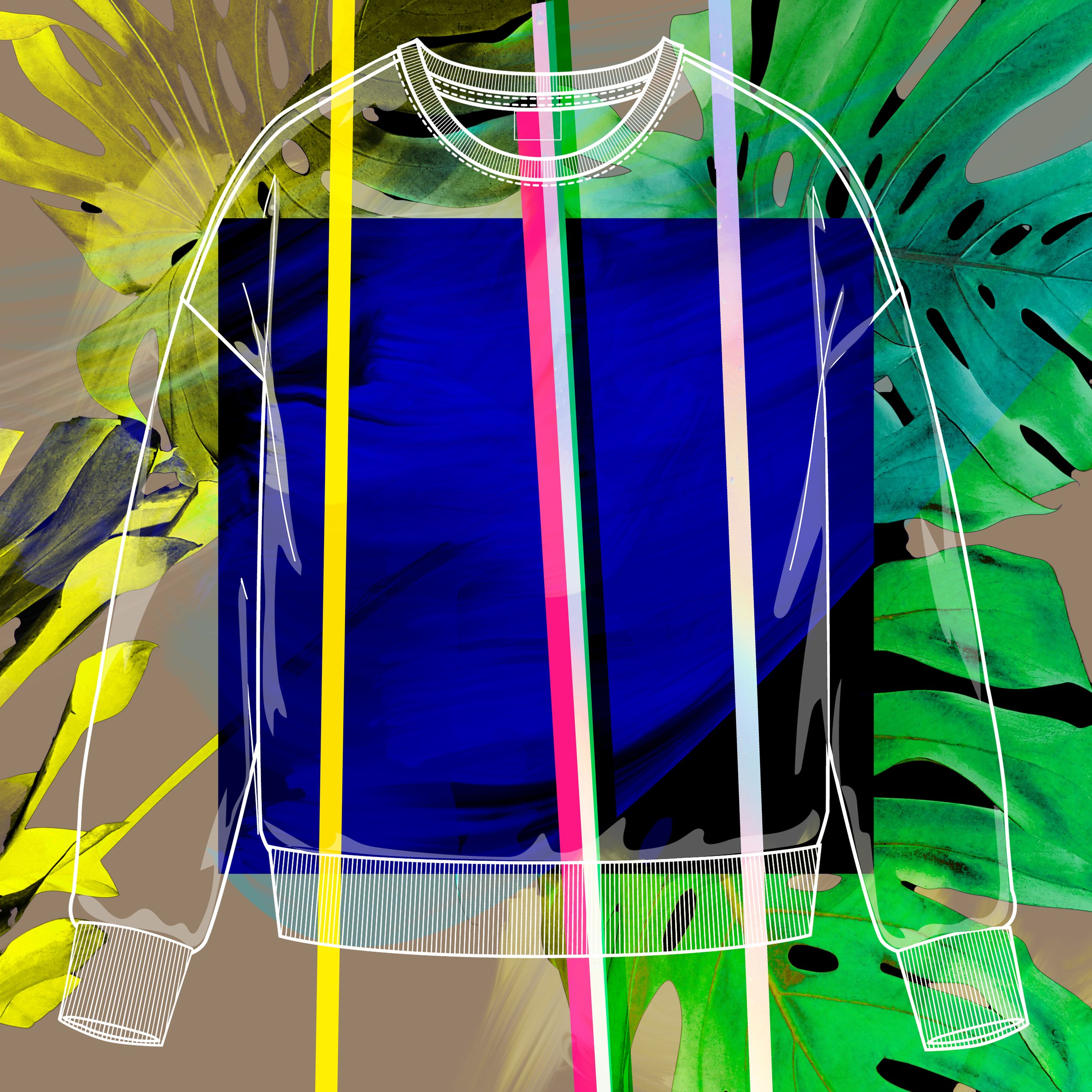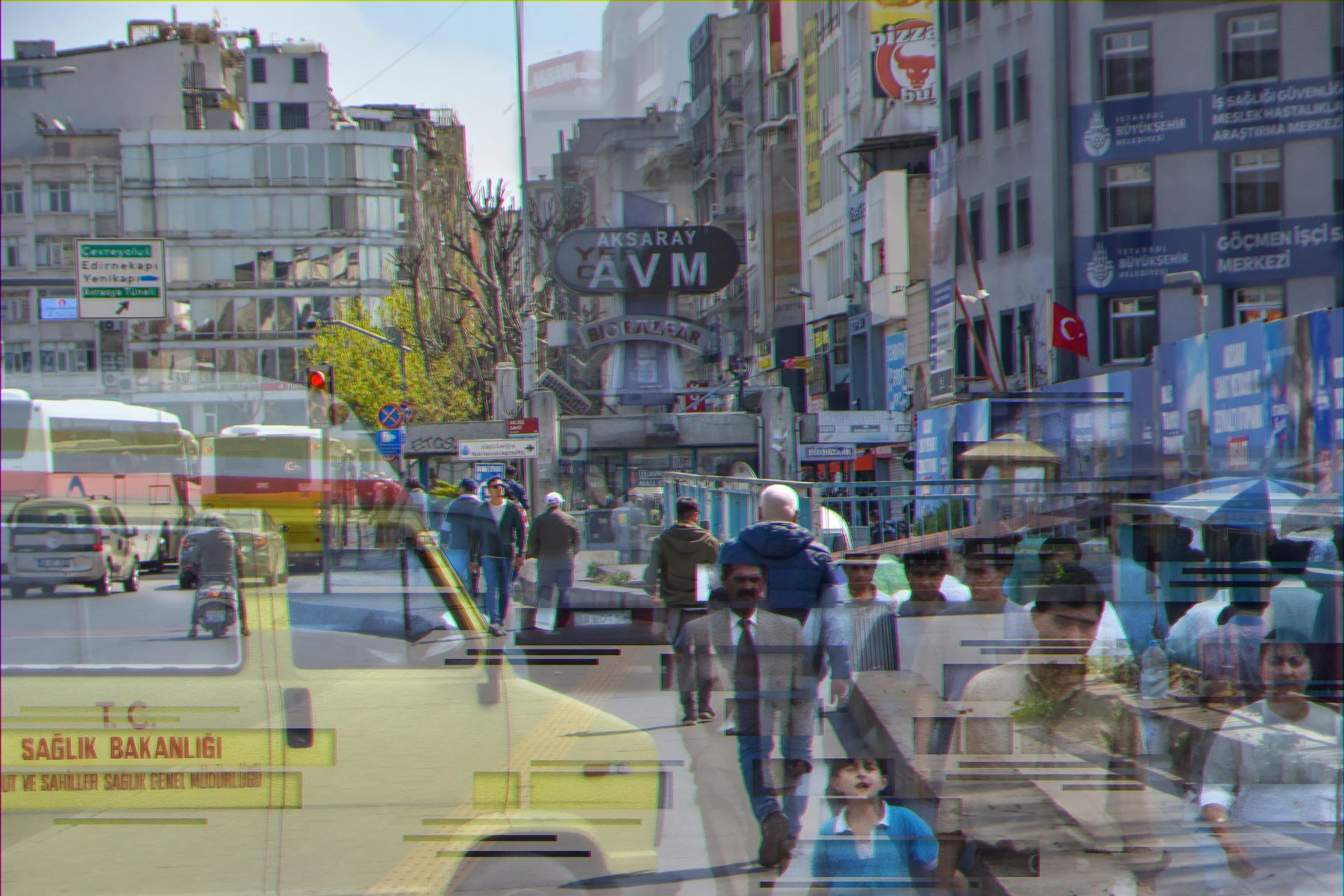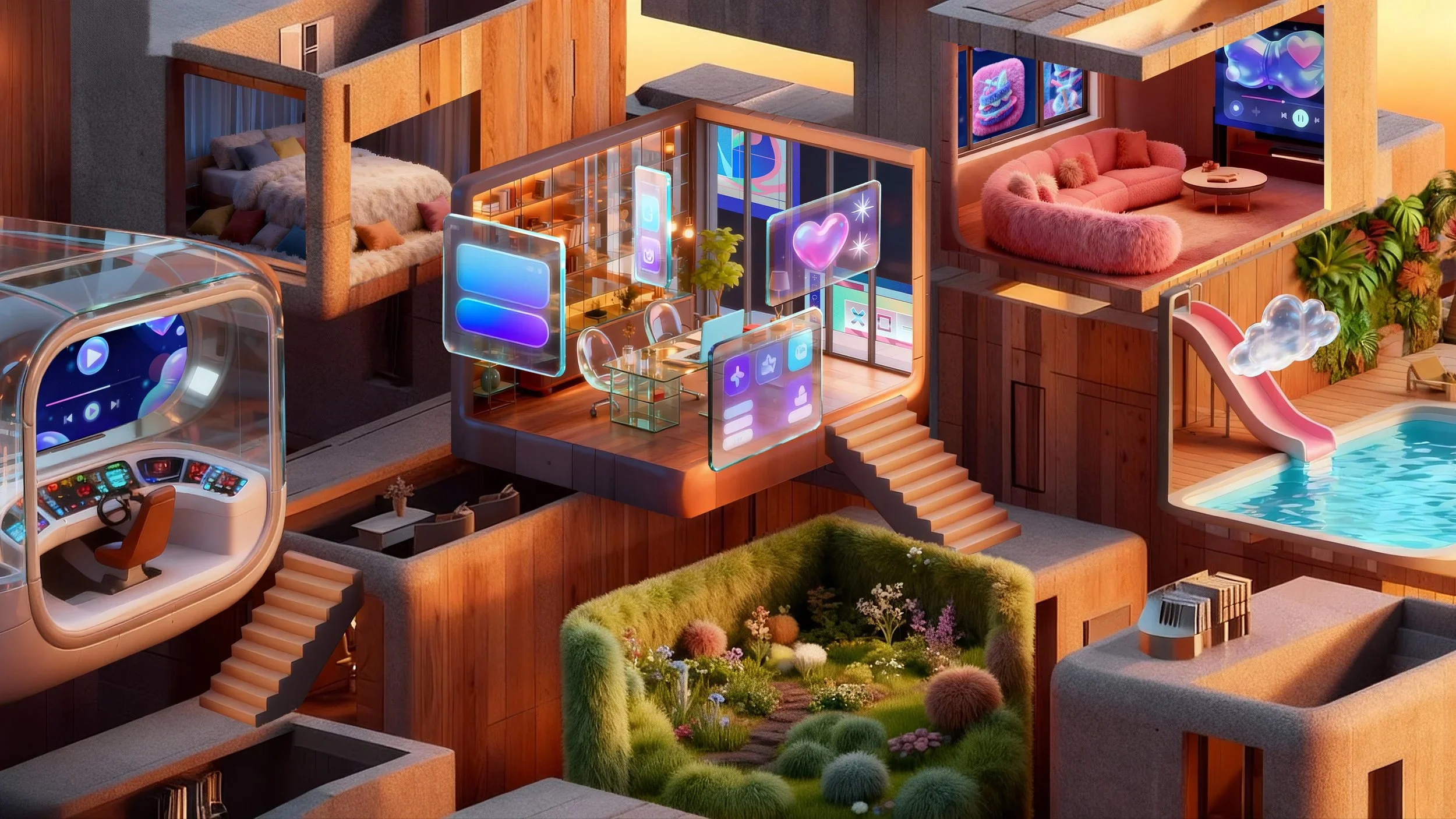10 Questions with Nae Zerka
Al-Tiba9 Art Magazine ISSUE13 | Featured Artist
Nae Zerka, born in 1969, lives and works in Salzburg, Austria.
In the age of frequent digital disruption, visual artist Nae Zerka showcases in his work the promising possibilities of painting with technology. As a child of the 80s, Nae Zerka has a penchant for computer-related activities, including electronic music and graphic design.
His artistic practice infuses visual elements borrowed from these disciplines with a painterly touch. Together with the use of contrasts and line work, they form new transformed worlds made possible by the digital realm.
Nae Zerka - Portrait
PLAY | Project Statement
In his new series PLAY, visual artist Nae Zerka shows a continuation of his artistic exploration on the subject of transformation, as well as new playful experiences of limitations. The new works feature portrait photographs, as well as graphic elements with a painterly touch and even everyday objects, such as adhesive tape.
Nae Zerka is an artist who enjoys playing with various forms of artistic experimentation, harnessing the importance of play as a primal source of artistic inspiration and a method for stimulating the associative flow of ideas. For PLAY, he has reworked both portrait photographs and vector graphics using digital and analogue painting techniques to create new visual worlds. His works reflect the changes and challenges of modern society in the age of digitalisation and crises. New forms and materials thereby make it possible to playfully challenge the viewer's perception.
"PLAY is a way for me to express my visual freedom and play with the boundaries between reality and fiction," says Nae Zerka. "I want to encourage viewers to question their own perceptions and embark on a playful journey of discovery."
UNTITLED I [FACES], Installation view © Nae Zerka
Get your limited edition copy now
INTERVIEW
Welcome back to Al-Tiba9, Nae. What have you been up to since your last feature in our magazine?
Hi, nice to be with you again!
I think the last two years have clearly been characterised by one thing: Namely, from one crisis to the next. As a human being, you have to digest all that first!
In retrospect, the work phase as an artist was an interesting development. I focused more and more on the human being again and put abstraction in the background.
That is to say, the human being was placed in the foreground again. However, as a reaction to this, I then largely left out the colour. An interesting turn that surprised me a little.
You recently had an exhibition at CICA Museum in South Korea. How was it? And what did you learn about the Korean art scene and its market?
Great! South Korea, and Seoul in particular, are very interesting. The art scene is generally very diverse, traditional and dynamic at the same time. What I particularly like about it is that it reflects the cultural influences from all over Asia, especially from China and Japan. Seoul is currently developing into one of the most important cities for contemporary art in Asia and has a growing number of galleries, art fairs, collectors, and curators who promote and support contemporary art.
MIR STEHT DER KOPF III, Giclée print, 110x110 cm, 2023 © Nae Zerka
UNTITLED III [FACES], Giclée print, 110x110 cm, 2022 © Nae Zerka
Let's talk about your recent work. Did you try anything new regarding techniques, themes, or approaches to the medium?
I experimented a lot with black and white portrait photographs. I would like to give you an example of that. I tried to generate 3D meshes from 2D photographs. These were then placed on top of each other in different positions. One light, the other dark. In the end, I added painterly accents to achieve formal aesthetics. The interesting thing was that the final synthetic impression of the meshes never came to the fore, although in the end, it had nothing to do with photography or painting. I have also continued this technique in more recent works.
Looking at your most recent series, "Play," you shifted from pure abstraction to a slightly more figurative style. What prompted this change?
As mentioned, I practically just developed my attempts with portrait photography further. So it was actually a gradual process that brought me more and more to the figurative and also to use photographic material in general.
I really like the idea that it's not always what you expect. In this way, I try to break up renowned techniques and, at the same time, reinterpret them. In the simplest case, this means that photography meets traditional painting that has been digitised again through photography and enters into a liaison in Photoshop.
MIR STEHT DER KOPF II, Installation view © Nae Zerka
Tell us more about the Play series. How did you come up with this idea?
Play is my artistic response to all the crises that currently accompany us. As an artist, I should actually lapse into a medium of depression and critically illuminate the social issues with my art. But then I thought I would do exactly the opposite. I remember that in the Middle Ages, there was the court jester. The court jester's job was to distract and amuse the ruler, and I think that's what we all need now.
The series uses portrait photographs, graphic elements, and everyday objects, such as adhesive tape, as you mention in your statement. Can you explain how you work on each piece? Do you still work digitally or shift to a completely handmade practice?
The basic idea was, on the one hand, to allow all experimentation through my new Play series. And on the other hand, the whole NFT craze made me realise that pure digital art is sometimes very volatile.
What remains of the impression among art lovers is great skepticism towards the digital medium in general and, of course, also towards digital art, even if it is mainly made for the wall, as in my case.
So then the idea with the adhesive tapes was born; I want to hold the artwork, or rather stick it down so that it stays! In other words, I mix the digital with the handmade again, only the other way around. And collectors simply like unique works.
LAST SHIRT PAINTING I, Giclée print, tapes, 110x110 cm, 2023 © Nae Zerka
LAST SHIRT PAINTING VII, Giclée print, tapes, 110x110 cm, 2023 © Nae Zerka
LAST SHIRT PAINTING VIII, Giclée print, tapes, 110x110 cm, 2023 © Nae Zerka
Apart from the techniques you use, the series reflects on the challenges and crises we face in a world increasingly more dependent on digital technologies. What are the main messages you would like to communicate with this series?
A core theme here is transformation, the human being on the way to digitising itself. That was also an idea for the portraits. But what emerges is also a kind of erasure—a disruptive transformation.
You only get something if you give something away, so to speak. To say it gently, the person loses himself without noticing it and at the same time is happy with everything that is possible."
The digital journey is unstoppable, I think, but the human being will naturally evolve in the process even if the human is pushed into the background.
Speaking of the digital world and digital art, what are your thoughts on the AI-generated art that is gaining popularity nowadays? As an artist yourself, do you find it a threat to your practice, especially concerning authorship and copyrights?
No, not at all. In fact, I welcome the technique as another exciting artistic possibility. I think forgeries also exist in traditional art forms. What is important either way for a work of art is the source and provenance of the work.
MIR STEHT DER KOPF I, Giclée print, 110x110 cm, 2023 © Nae Zerka
MIR STEHT DER KOPF II, Giclée print, 110x110 cm, 2023 © Nae Zerka
Do you still work with NFTs now that cryptocurrencies and the crypto art market are declining? Or do you think it is just a momentary stop?
I find the technology and the possibilities that would be associated with it really exciting. Unfortunately, greedy speculator communities and fraudsters on a grand scale have managed to destroy the entire reputation before it could establish itself seriously. I have thus reduced it to a minimum.
And last, as always, what are your future projects? Where will we see you next?
I am currently working on a solo exhibition in my hometown of Salzburg and am in talks about a possible location. We'll see. It's not always easy with politics, and there are many barriers to overcome. There are also group exhibitions in Tel Aviv and Milan on the agenda for 2023, so there's plenty to do.





























